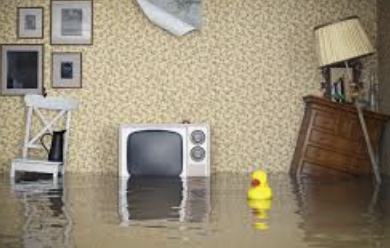Water Damage and Insulation: Expert Solutions to Protect Your Home and Prevent Future Issues

How to Care for Your Insulation and Walls After Flooding or Water Damage
Dealing with water damage is tough, and we're sorry if this is something you're experiencing right now. Flooding or water damage can feel overwhelming, especially when it affects areas you can’t always see, like your insulation and walls. Addressing the problem early is key, as wet insulation and water-damaged walls can lead to long-term issues like mold growth, structural damage, and skyrocketing energy costs. In this guide, we’ll walk you through everything you need to know about caring for your insulation and walls after flooding, so you can protect your home and keep it energy-efficient.
Types of Insulation and How They Respond to Water Damage
Not all insulation reacts the same way when exposed to water. Depending on the type of insulation you have in your home, the next steps could vary. Here’s a closer look at how different insulation materials respond to water damage:
-
Fiberglass Batt Insulation: This type of insulation, commonly found in walls and attics, can sometimes be dried out and reused. However, if it becomes thoroughly soaked, it may lose its insulating properties. Check if it feels firm after drying—if it’s compressed and ineffective, it’s best to replace it.
-
Blown-In Cellulose Insulation: Made from recycled paper materials, blown-in cellulose readily absorbs water. Unfortunately, once it’s wet, it typically needs to be completely replaced. If left unchecked, it can retain moisture and become a breeding ground for mold.
-
Spray Foam Insulation: Closed-cell spray foam insulation is more water-resistant than other types. In some cases, it can withstand moisture without needing replacement, as it creates an airtight, watertight barrier. On the other hand, open-cell spray foam is more likely to absorb water and may need to be replaced after significant exposure.
Spotting Hidden Water Damage in Insulation and Walls
Water damage isn’t always easy to spot, especially when it’s hidden beneath the surface. Insulation and walls can hide damage that isn’t immediately visible, which can lead to bigger problems down the road.
Here are a few signs that you might have hidden water damage:
-
Discoloration on Walls: If you notice yellow or brown stains on your walls, it’s a sign that water has soaked through the insulation or drywall. Even small stains may indicate larger problems beneath the surface.
-
Musty Smells: A musty odor is often a sign of mold growth, even if you can’t see it. Mold thrives in damp, dark environments, and water-damaged insulation is the perfect breeding ground. If your home smells musty, address the issue immediately to avoid health risks.
-
Damp or Soft Spots: Gently press on the walls in areas that were exposed to water. If they feel soft, spongy, or damp, there’s a good chance water has been absorbed into the insulation or drywall. These areas may need to be removed and replaced.
Preventing Mold After Water Damage
One of the biggest risks after water damage is mold growth. Mold can not only damage your home, but it can also pose serious health risks. The key to preventing mold is acting quickly.
Here’s how you can reduce the chances of mold growth after a flood or water damage:
-
Act Fast: Mold can begin growing within 24 to 48 hours after water exposure. As soon as it’s safe to do so, remove any wet insulation and start drying out the affected area.
-
Use Dehumidifiers and Fans: Keeping the area dry is critical. Dehumidifiers and large fans can help remove moisture from the space. Keep them running for several days, if necessary, to ensure the area is completely dry.
-
Consider Mold-Resistant Insulation: When it comes time to replace damaged insulation, upgrading to mold-resistant options, such as closed-cell spray foam, can add an extra layer of protection. Not only does it prevent mold growth, but it also improves your home’s energy efficiency.
Health Risks of Not Replacing Water-Damaged Insulation
Ignoring water-damaged insulation can lead to serious health problems. Wet insulation creates an environment where mold and mildew thrive, which can negatively affect the air quality in your home.
Here’s why it’s important to replace damaged insulation:
-
Mold Allergies: Mold spores can trigger allergic reactions, especially in people with asthma or respiratory issues. Symptoms can include sneezing, coughing, and difficulty breathing, which can make your home uncomfortable and unhealthy.
-
Toxic Mold: Some types of mold, like black mold, produce harmful mycotoxins that can lead to serious health problems if left untreated. Toxic mold exposure can cause long-term respiratory issues, so it’s crucial to remove any compromised insulation as soon as possible.
Steps to Take Immediately After Water Damage
When your home experiences water damage, it’s important to act quickly to prevent further problems.
Here are the first steps you should take to minimize damage and ensure proper repairs:
-
Turn Off Power: Water and electricity are a dangerous combination, so make sure to turn off any electrical systems in affected areas. If you’re unsure, consult a professional to safely assess the situation.
-
Document the Damage: Before beginning any cleanup or repairs, take photos or videos of the damage. This documentation is important for filing insurance claims and making sure you receive proper coverage for any repairs or replacements.
-
Contact Professionals: While minor water damage can sometimes be handled on your own, larger-scale damage should be assessed by a professional. An expert can determine the full extent of the damage and recommend whether insulation and walls need to be replaced.
Insurance Coverage for Water Damage
Navigating insurance claims after water damage can be confusing. Many homeowners aren’t sure what their insurance covers, especially when it comes to insulation replacement.
Here’s a guide to understanding insurance coverage for water damage:
-
Does Your Insurance Cover Insulation Replacement? The answer depends on the cause of the damage. Most standard homeowners' insurance policies cover damage from sudden, accidental incidents like a burst pipe. However, if the damage was caused by flooding from a natural disaster, that typically falls under a separate flood insurance policy.
-
Tips for Filing a Claim: To get the most out of your insurance, document the damage thoroughly and keep all receipts for repair services. You’ll need to provide evidence of the damage and the repairs made to your insulation and walls. Contact your insurance provider as soon as possible to report the damage.
-
Flood Insurance Considerations: If you live in a flood-prone area, it might be worth looking into separate flood insurance. Standard homeowners' insurance doesn’t cover natural flooding events, and having a separate policy can help protect you from costly repairs.
Future-Proofing Your Home
Once your home has been repaired, you might be wondering how to protect it from future water damage. Taking steps now can save you time and money down the road.
Here are a few ways to future-proof your home:
-
Install a Moisture Barrier: Adding a moisture barrier to your walls and floors can help prevent future water penetration. This is especially important for homes in flood-prone areas. A moisture barrier can keep insulation and walls dry even if minor flooding occurs.
-
Upgrade to Water-Resistant Insulation: If you live in a flood-prone area, upgrading to closed-cell spray foam insulation can add extra protection. This type of insulation is highly water-resistant, which means it can withstand minor flooding without absorbing moisture.
-
Regular Inspections: Make it a habit to inspect your roof, plumbing, and foundation at least once a year. Small leaks or cracks can quickly turn into major problems if left unchecked, so regular inspections can help catch these issues early.
Why You Should Call a Professional
While some water damage repairs can be done on your own, larger-scale flooding or significant damage requires professional help.
Here’s why it’s important to bring in the experts after significant water damage:
-
Thorough Drying: Professionals have the tools and expertise to make sure everything is completely dry before beginning repairs. Even if an area feels dry to the touch, moisture could still be trapped inside walls, which can lead to mold growth.
-
Structural Assessment: Water can weaken your home’s walls and foundation. A professional will assess the structural integrity of your home and identify any hidden damage.
-
Expert Recommendations: A professional can help you decide whether to replace your insulation with the same material or upgrade to a more water-resistant option, such as closed-cell spray foam.
Common Mistakes to Avoid After Water Damage
It’s easy to make mistakes when dealing with water damage, especially if you’ve never dealt with it before.
Here are some common mistakes to avoid:
-
Not Allowing Enough Time to Dry: One of the biggest mistakes homeowners make is not letting everything dry out completely. Even if a surface feels dry, moisture could still be trapped inside walls and insulation. Rushing the process can lead to mold growth down the road.
-
Reusing Water-Damaged Insulation: While it might be tempting to reuse insulation that’s been exposed to water, it often loses its effectiveness and can become a breeding ground for mold. It’s best to replace it to avoid future problems.
-
Skipping Professional Help: Water damage can sometimes seem minor, but there may be hidden issues that only a professional can spot. Skipping professional help could lead to bigger problems in the future.
Water damage can be overwhelming, but taking the right steps can protect your home and help you get back on track. Whether it’s assessing the damage, preventing mold, or installing water-resistant insulation, each step brings you closer to a safer, more comfortable home.
If you’re dealing with water damage and don’t know where to start, Koala Insulation is here to help. We can guide you through the process, recommend the best solutions for your home, and ensure everything is properly repaired.
If your home has been affected by water damage, don’t wait—reach out to Koala Insulation today. Our team is ready to help with expert insulation services that will keep your home energy-efficient and protected from future water damage. Contact us at 877-87-KOALA or visit our website to schedule a consultation.
Find Your Location


Get a quote



